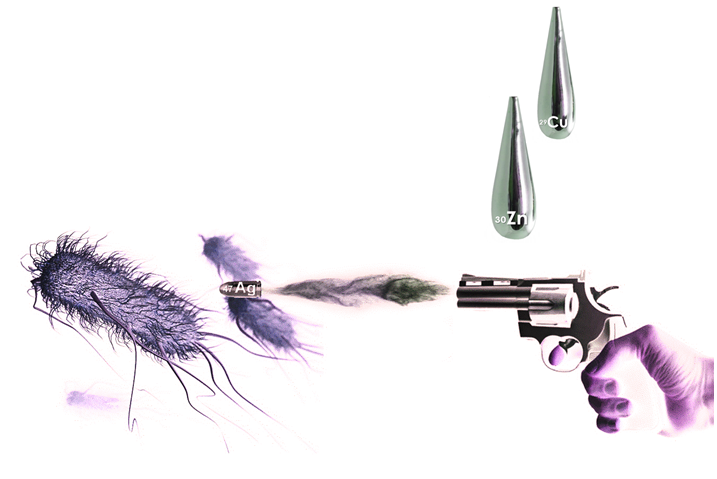New Monometallic and Heterobimetallic Complexes of Silver(I), Zinc(II) and Copper(II) with an Amino Acid Derived Ligand as Potential Antimicrobial Agents
Nowadays, multiresistant bacteria are gaining more and more ground: Once very effective antibacterial drugs cannot prevail anymore over certain bacteria. Thus, scientists are bothering to invent new compounds: Some focusing to create new derivatives of famous antibiotics like Penicilline, others getting back to synthesize complexes with precious or essentiel metals as they are known since antiquity for their antimicrobial properties. It has not only been an old tradition to throw silver coins in fountains but rather to keep the drinking water free of microbes owing to the antimicrobial activity of this precious metal. Even the ancient Greeks and Romans drank instinctively from silver vessels to keep the liquids fresh or ate from silver plates.[1] It has been found that silver ions damage the DNA of bacteria by interfering with guanine and adenine base pairs[2] and that they induce an overproduction of reactive oxygen species (ROS) such as hydroxy radicals by disrupting the metabolic pathways of Fenton chemistry.[3,4] Furthermore, it is known that silver ions interact strongly with thiol groups and inhibit or degrade therefore the disulfide bond formation in many proteins and enzymes. This leads finally to the increase of the bacterial membrane permeability.[3]

Based on our extensive experience with antimicrobial silver compounds[f.ex.4,6], and silver resistance of bacteria[4,5], we now present combinations of silver ions with zinc or copper ions in bimetallic complexes with p-amino-L-phenylalanine to create a synergistic antimicrobial effect in order to fight more efficiently against bacteria.
[1] Fromm, K. M. Nat. Chem. 2011, 3, 178.
[2] Arakawa, H.; Neault, J. F.; Tajmir-Riahi, H. A. Biophys. J. 2001, 81, 1580.
[3] Morones-Ramirez, J. R.; Winkler, J. A.; Spina, C. S.; Collins, J. J. Science Translational Medicine 2013, 5 (190), 1–11.
[4] Eckhardt, S.; Brunetto, P. S.; Gagnon, J.; Priebe, M.; Giese, B.; Fromm, K. M. Chem. Rev. 2013, 113, 4708–4754.
[5] Mirolo, L.; Schmidt, T.; Eckhard, S.; Meuwly, M.; Fromm, K. M. Chem. Eur. J. 2013, 19, 1754–1761.
[6] Varisco, M.; Khanna, N.; Brunetto, P. S.; Fromm, K. M. ChemMedChem 2014, 9, 1221–1230.